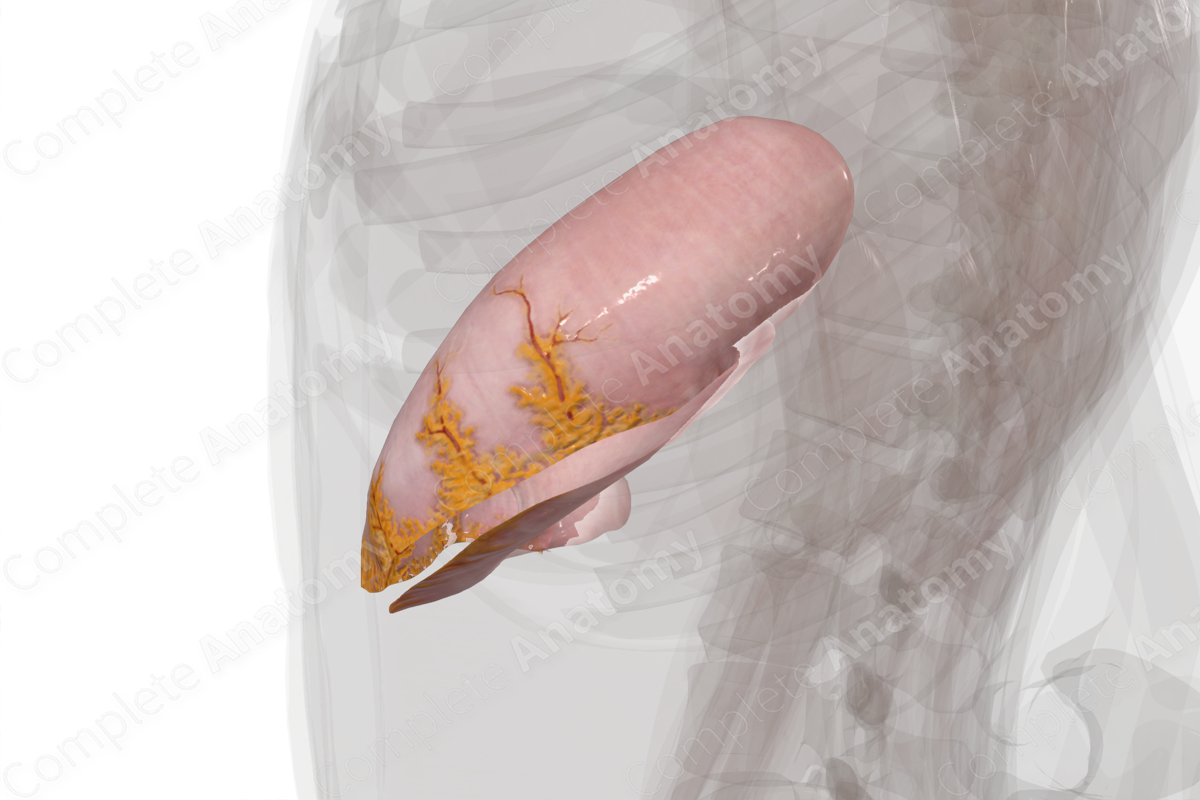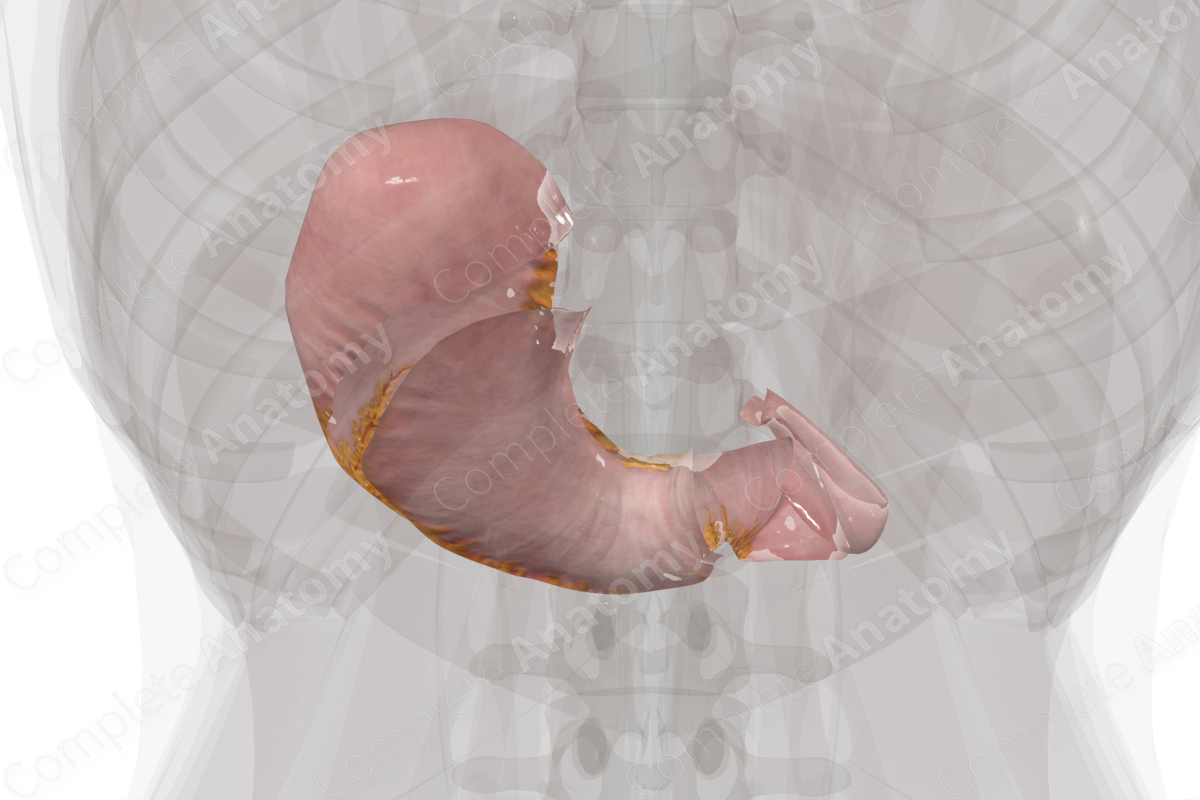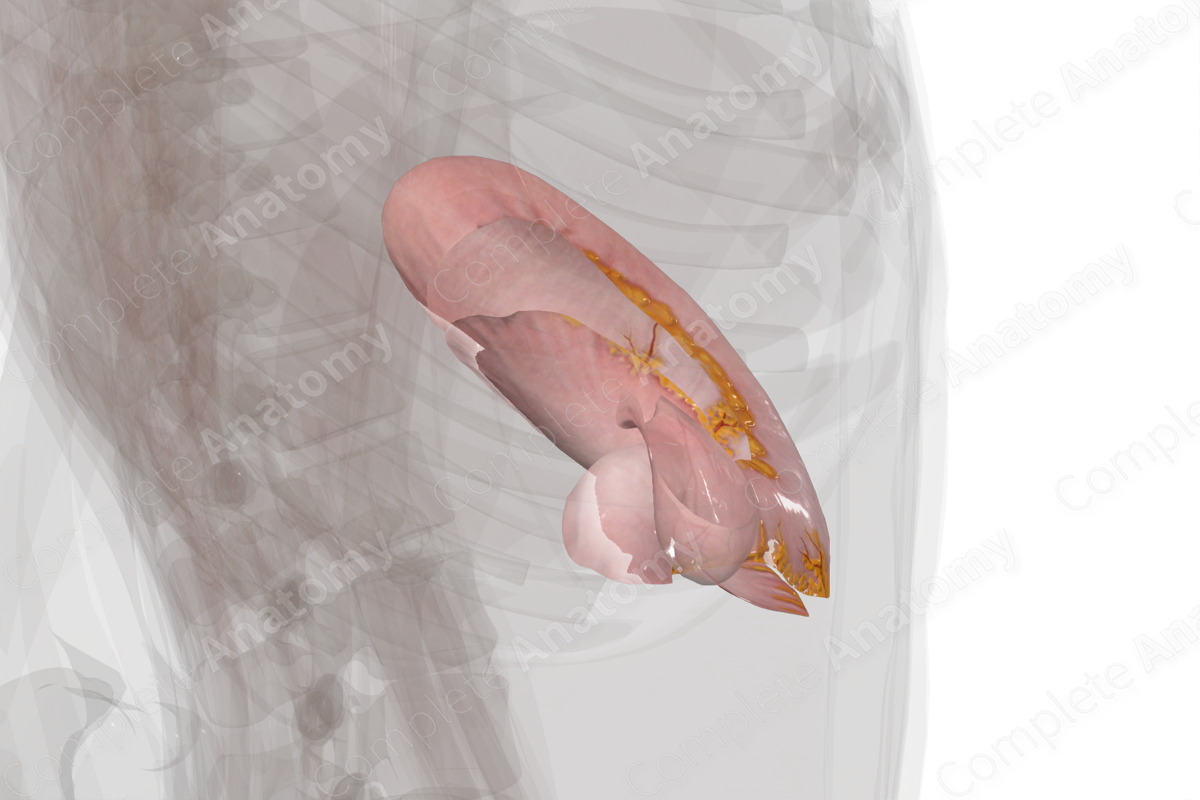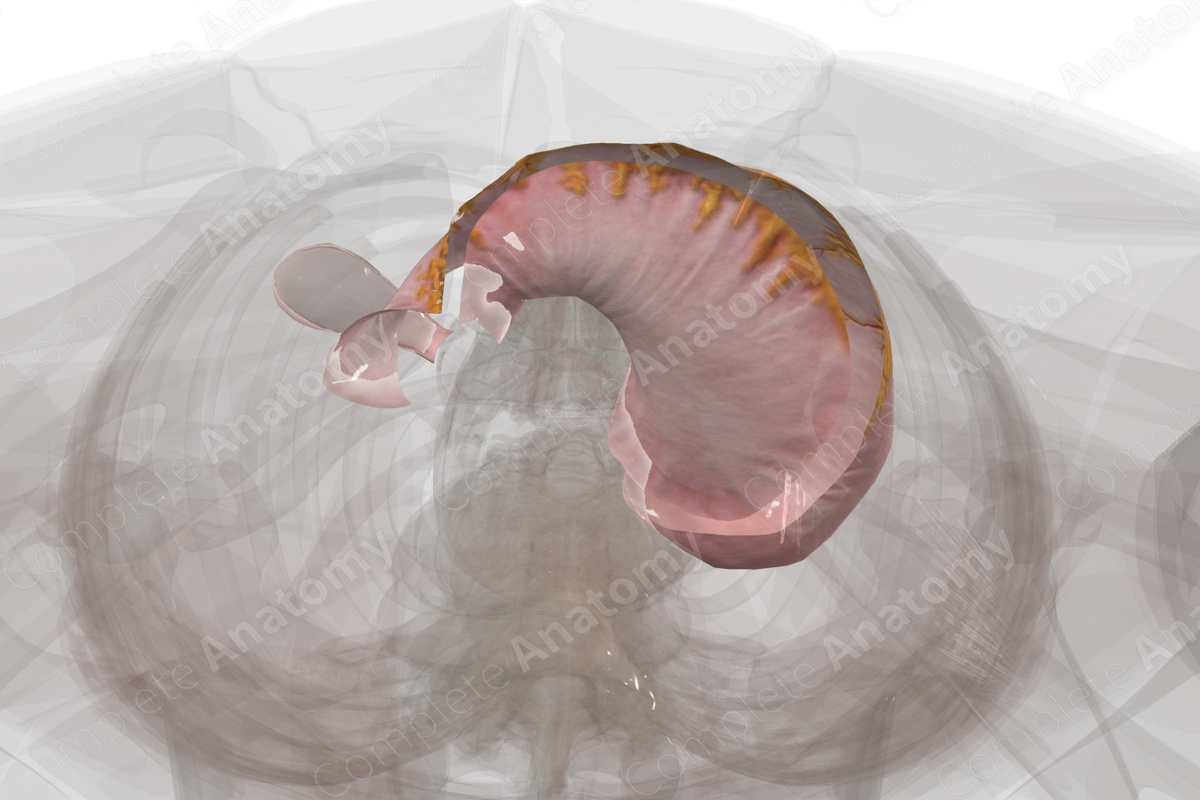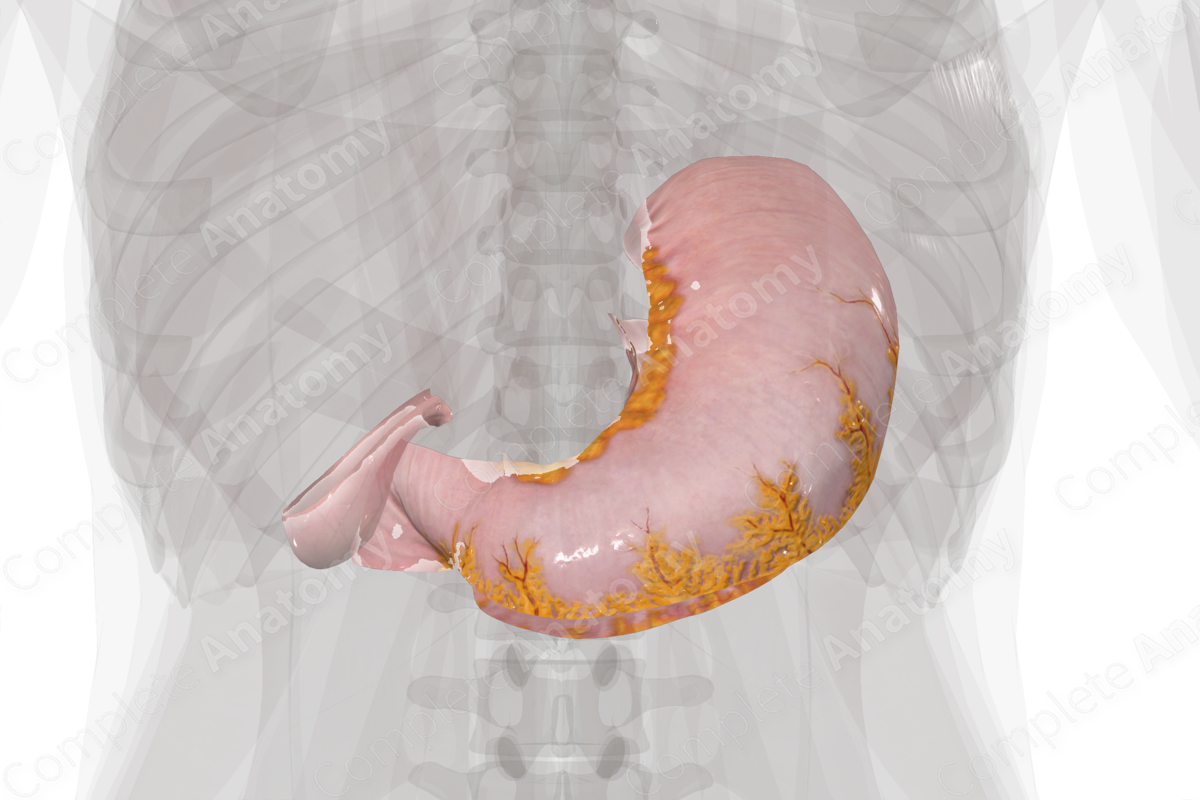
Structure
The peritoneum is a complex, continuous serous membrane consisting of a layer of mesothelium and varying degrees of connective and adipose tissue. Visually, it's largely unremarkable, smooth, and has a lubricated surface due to the presence of peritoneal fluid.
Related parts of the anatomy
Anatomical Relations
Visceral peritoneum encapsulates the viscera of the body, such as the stomach, liver, and small intestines. However, usually there is a small region where visceral peritoneum reflects from the surface of the organ and is continuous with parietal peritoneum by double folds called mesentery or peritoneal ligaments. The visceral peritoneum is closely related to the surface of the organ and shares similar neurovascular supply (autonomic), thus making it different from the supply to the parietal peritoneum (Standring, 2016). For this reason, the visceral peritoneum lacks conscious pain receptors and is poorly responsive to heat and other stimuli. Rather, the viscera peritoneum responds to stretching, for example, the bladder and stomach distending to accommodate for changes in volume.
Function
The peritoneum secretes peritoneal fluid which helps lubricate viscera within the abdominal and pelvic cavities, reducing friction between organs. This is especially true of dynamic organs involved in peristalsis or those that distend due to changes of volume, such as the bladder. Secondly, the peritoneum aids in the immune response as the peritoneal fluid contains various immune cells. The peritoneal fluid actively flows around the peritoneal cavity and is eventually absorbed by lymphatics. The peritoneum, like other tissues, responds to trauma and inflammation, thus helping to protect the viscera (Moore, Dalley and Agur, 2013).
List of Clinical Correlates
—Peritonitis
—Ascites
—Adhesions
References
Moore, K. L., Dalley, A. F. and Agur, A. M. R. (2013) Clinically Oriented Anatomy. Clinically Oriented Anatomy 7th edn.: Wolters Kluwer Health/Lippincott Williams & Wilkins.Standring, S. (2016) Gray's Anatomy: The Anatomical Basis of Clinical Practice. Gray's Anatomy Series 41st edn.: Elsevier Limited.
Learn more about this topic from other Elsevier products

